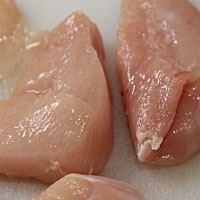Perception, risk attitude and willingness to pay for safety and innovative attributes of processed chicken meat in Oyo State, Nigeria

Accepted: 24 November 2019
HTML: 32
All claims expressed in this article are solely those of the authors and do not necessarily represent those of their affiliated organizations, or those of the publisher, the editors and the reviewers. Any product that may be evaluated in this article or claim that may be made by its manufacturer is not guaranteed or endorsed by the publisher.
Authors
This paper examined the perception and willingness to pay (WTP) for safety and innovative attributes of processed chicken meat among consumers in Oyo State, Nigeria, taking into consideration their risk attitudes. The study revealed that the majority of the consumers were more aware of existing attributes than innovative attributes of processed chicken meat. Also, the majority of consumers (73.3%) were risk-neutral. Only 35% of respondents had lowered chicken consumption due to safety concerns and about 51.7% of respondents claimed to be satisfied with the level of safety and quality of chicken meat sold in the Nigerian markets. Sex, household size, major occupation, being a grocery shopper, income and age significantly affected the willingness of consumers to pay a premium for safety and innovative attributes of processed chicken meat. A positive mean WTP of 1,613.16 Naira was estimated. It was therefore recommended that key players in the value chain should adopt relevant marketing strategies in line with these attributes and target a specific niche of consumers based on their socioeconomic characteristics. Furthermore, government and other regulatory bodies should put measures in place to ensure that processors are sensitized about the safety of chicken.
How to Cite
PAGEPress has chosen to apply the Creative Commons Attribution NonCommercial 4.0 International License (CC BY-NC 4.0) to all manuscripts to be published.

 https://doi.org/10.4081/ijfs.2020.8506
https://doi.org/10.4081/ijfs.2020.8506



